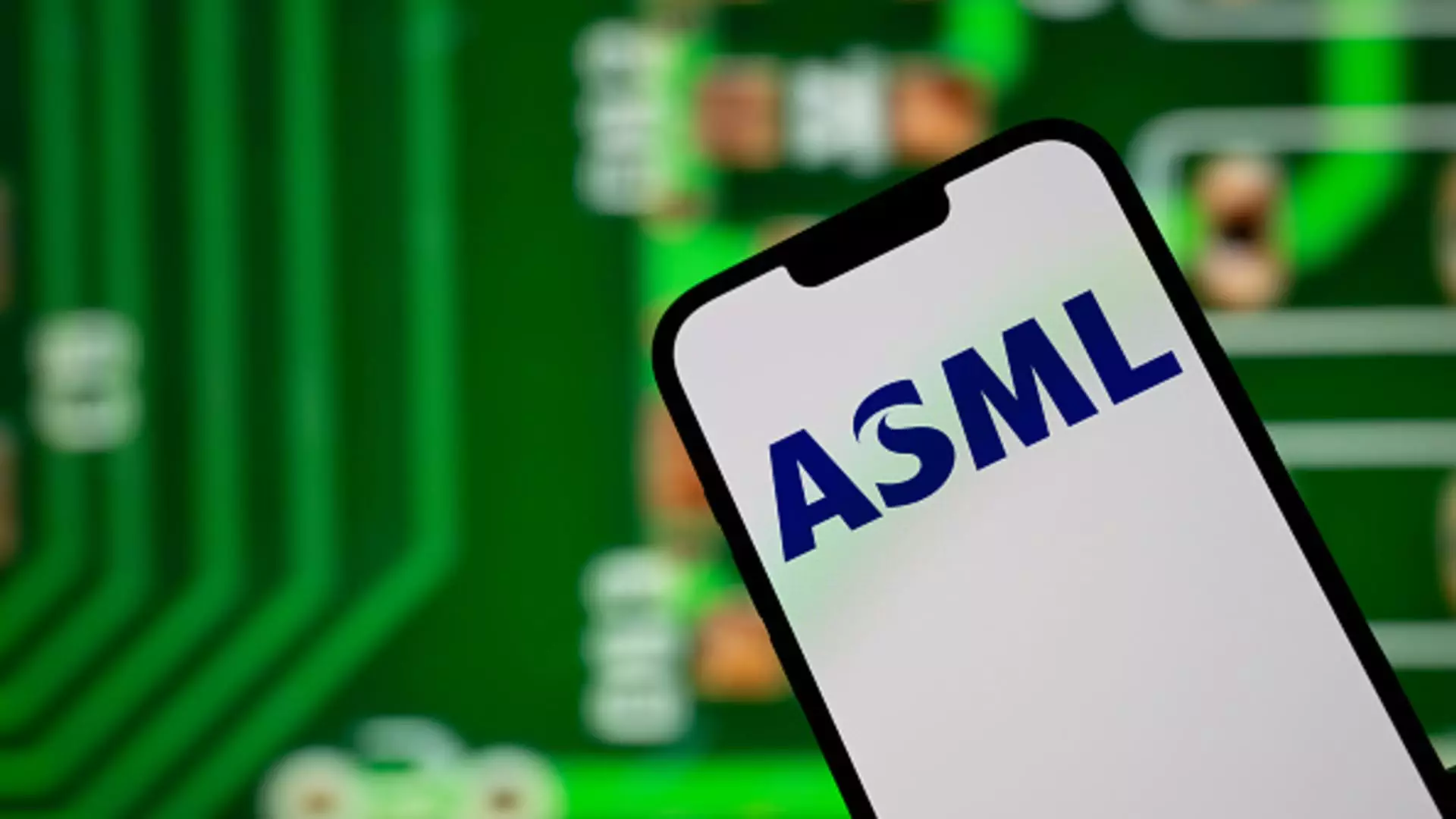ASML, the Dutch powerhouse in semiconductor manufacturing equipment, recently reported results that fell short of market expectations, raising questions about the future of the semiconductor industry amidst a backdrop of geopolitical uncertainty. The company’s net sales for the first quarter of 2025 hit €7.74 billion, just shy of the anticipated €7.8 billion. This slight miss in revenue is not just a numeric detail; it signifies a potential shift in market dynamics for one of the world’s most critical suppliers of chipmaking technologies. In dissecting ASML’s financial results, one cannot help but notice the grim undercurrents exposed by CEO Christophe Fouquet’s remarks on customer demand and the looming impact of U.S. tariffs.
Understanding the Impact of Tariffs
Fouquet emphasized the uncertainties posed by U.S. trade restrictions, which he foresees as capable of pushing ASML’s revenue to the lower end of its projected guidance of €30 billion to €35 billion for the year. This is a stark reminder that business does not exist in a vacuum; geopolitical factors can significantly disrupt market conditions. With the current administration’s inconsistent stance on tariffs affecting semiconductors, one clear takeaway is that uncertainty is the new norm for ASML and its stakeholders. While AI continues to fuel demand for semiconductors, the threat of tariffs could overshadow any technological advancement.
It’s essential to understand that ASML operates in a global market where many firms rely on its sophisticated machinery. The company’s ties to major players like TSMC—who depend on ASML’s cutting-edge lithography machines—underscore the interconnectedness of this industry. ASML’s predicament serves as a case study on how political decisions ripple through global supply chains, leading to an increasingly fragile economic landscape.
Investor Sentiment and Market Reactions
ASML’s stock took a significant hit, declining by 5% in early trading after the announcement. This reaction was not unexpected; investors are keenly aware of how external factors can affect bottom lines. Market analysts are now faced with a dilemma: Are these short-term declines genuine signals of long-term weakness, or merely the product of momentary turbulence caused by external shocks? Ben Barringer of Quilter Cheviot encapsulates this uncertainty, cautioning against premature conclusions while highlighting the potential widespread impact of the U.S. tariffs.
The cautious investor should reflect on how robust ASML’s business model truly is—especially given the CEO’s own admission that demand could still be subject to regional volatility. This insight challenges the narrative of an unshakeable semiconductor market that many have come to expect, and raises valid questions about the resilience of companies like ASML in the face of shifting trade paradigms.
Adapting to a New Normal
The semiconductor industry, traditionally viewed as a bulwark of technological progress, must now grapple with the repercussions of active government intervention. For ASML, the challenge is not just about maintaining demand but also about navigating an ever-evolving market landscape where political tensions can impose immediate and significant constraints on operations.
Fouquet’s comments about tariffs creating a “new uncertainty” beckon a change in strategy for ASML and its competitors. Companies must now prepare for scenarios that involve less predictability and more volatility, prompting an urgent discussion on risk management and contingency planning in supply chains. This situation compels industry leaders to consider how they can influence policy or advocate for a more stable trade environment that allows innovation to flourish.
The Bigger Picture: Balancing Innovation and Trade
President Biden’s administration has expressed a willingness to protect national interests, which is commendable in theory. However, this protective posture can stifle innovation and slow the pace of development in an industry that thrives on collaboration and global outreach. The semiconductor landscape, with its bright promises of AI and digital transformation, risks being overshadowed by self-imposed limitations rooted in protectionism.
The juxtaposition of demanding progress while enacting restrictive measures results in an incongruity that few can afford, particularly in the fast-paced sphere of technology. ASML stands at the epicenter of this dilemma, with the power to influence not only market dynamics but also the policies affecting them. As we observe this unfolding narrative, the call for a balanced approach to trade and technological advancement becomes increasingly relevant and urgent. Only through a commitment to collaboration and serious dialogue can the industry hope to navigate the choppy waters created by geopolitical winds.

